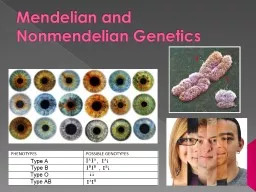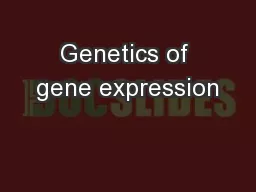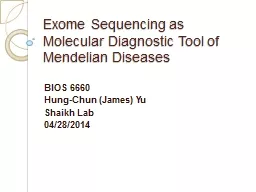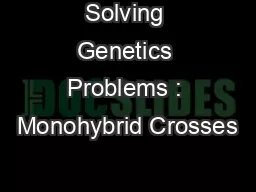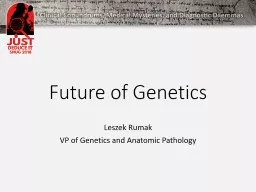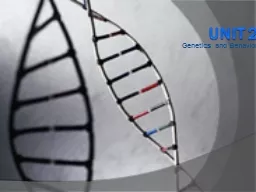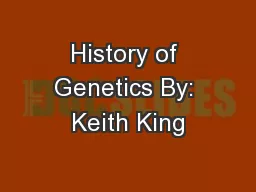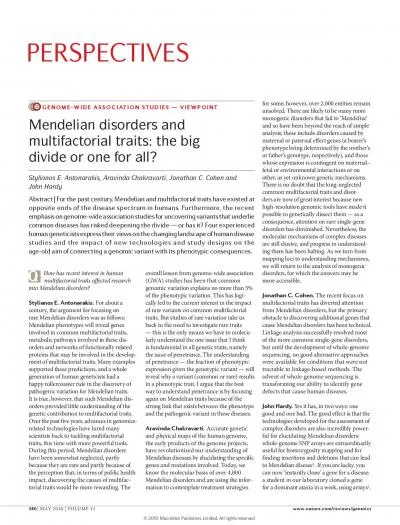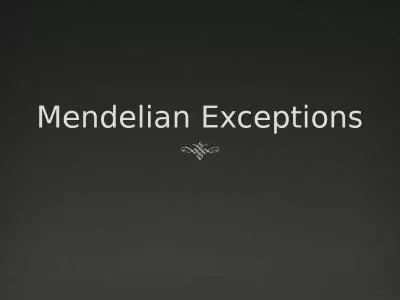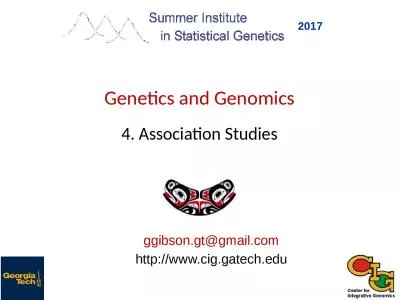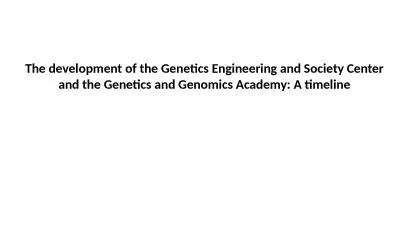PPT-Mendelian and Nonmendelian Genetics
Author : calandra-battersby | Published Date : 2018-11-06
GENETIC VOCABULARY Gene A specific characteristic of an organisms A segment of DNA Genetics Branch of biology that focuses on heredity Allele Different versions
Presentation Embed Code
Download Presentation
Download Presentation The PPT/PDF document "Mendelian and Nonmendelian Genetics" is the property of its rightful owner. Permission is granted to download and print the materials on this website for personal, non-commercial use only, and to display it on your personal computer provided you do not modify the materials and that you retain all copyright notices contained in the materials. By downloading content from our website, you accept the terms of this agreement.
Mendelian and Nonmendelian Genetics: Transcript
GENETIC VOCABULARY Gene A specific characteristic of an organisms A segment of DNA Genetics Branch of biology that focuses on heredity Allele Different versions of a gene Ex B or b Dominant The expressed form of a trait which will completely cover the recessive trait Ex B. in the Animal Industry. Describe 2 types of selection. Compare Phenotype and Genotype. Define Common Terms used in genetics. Describe the interrelationship between genetics and the environment.. Demonstrate the use of a . Stephen Montgomery. smontgom@stanford.edu. montgomerylab.stanford.edu. @. sbmontgom. Identifying the genes and variants responsible for disease.. Monogenic to polygenic diseases. Rare to common variants. Next Generation Sequencing:. A technical perspective. Bristol Genetics Laboratory. Joanne Davies. Genetic Technologist. Objectives. Summarise the NGS assays currently available at BGL. Look at the general challenges with NGS assays. BIOS . 6660 . Hung-Chun (James) Yu. Shaikh Lab. 04/28/2014. Human Genetic . Diseases. Penetrance vs . F. requency. Kaiser J. . S. cience. (2012) 338:1016-1017.. Human Genetic . Diseases. Complex Disorder. Next Generation Technology . Developments and Applications:. Now and Potential across Healthcare. Eileen Roberts. Thalia Antoniadi. http://www.nbt.nhs.uk/genetics. The changing landscape . Advances in technology are altering the landscape of medical care . Two organisms. One characteristic. Complete dominance . Solving Genetics Problems : Monohybrid Crosses. Complete dominance . the . dominant allele. completely masks the effect of the . recessive allele. VP of Genetics and Anatomic Pathology. . GIS/LIS. Web enabled 5.0 . BETA RELEASE. DYNAMIC CLOUD APPROACH. DOCKER/CHEF/PRIVATE CLOUD SUPPORT. PRECISION MEDICINE. UX (USER EXPERIENCE) OPTIMIZATION. DEVELOPMENT ROADMAP 2018-2020. Genetics and Behavior. Behavior Geneticists. study our differences and weigh the relative effects of heredity and environment.. Chromosomes, Genes, and DNA. Chromosomes. . (46 in each sell) containing . Objectives. State the history of genetics;. Describe major century events;. Define terms used in genetics . History of Genetics. People have known about inheritance for a long time.. --children resemble their parents. David Evans. University of Queensland. University of Bristol. Some Criticisms of DOC Modelling in Twins. Measurement error. Power (both variables need to have radically different aetiologies). Only useful for testing strong hypotheses about causation. multifactorial traits affected research into Mendelian disorders? Stylianos E. Antonarakis. For about a century, the argument for focusing on rare Mendelian disorders was as follows: Mendelian ph Exceptions. Mendel got lucky – all 7 traits he studied showed . complete . (simple). dominance. .. Mendelian. Exceptions. Mendel got lucky – all 7 traits he studied showed . complete . (simple). 2017. ggibson.gt@gmail.com. http://www.cig.gatech.edu. Outline. General . overview of association . studies. Sample Results. Three steps to GWAS:. Primary scan. Replication. Fine mapping. Individual Site Score. and the Genetics and Genomics Academy: A timeline. 1990. 1995. 2000. 2005. 2010. 2015. 2020. NIH sponsored. Genetics Graduate Training . Program in the . Genetic Architecture of . Quantitative Traits.
Download Document
Here is the link to download the presentation.
"Mendelian and Nonmendelian Genetics"The content belongs to its owner. You may download and print it for personal use, without modification, and keep all copyright notices. By downloading, you agree to these terms.
Related Documents

